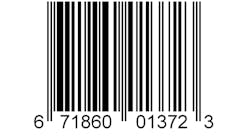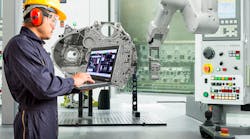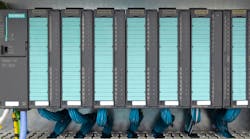Asset management is similar to inventory management, but there is an important difference for manufacturing operations: inventory management is concerned with the physical goods that are stored in a warehouse or already sold; asset management refers to equipment and machinery used to manufacture the product or service.
Some manufacturers choose to manage assets by manually recording each element and then transferring the information to a computer, usually using an Excel file. Though this seems like an easy option, because it costs little to no money, it frequently results in significant error and miscalculation.
Furthermore, recording the location of an asset or its serial number does not account for its maintenance schedule, who used the equipment and when it was used, or whether it was moved. On average, businesses lose up to $437,000 annually as a result of lost or misplaced assets.
Listed here are some things for manufacturers to consider before choosing an asset management solution:
Q: What do you need to track?
Keep in mind that it is important to know the maintenance schedule, equipment uptime, and downtime, and the user for each machine. By integrating an asset management system into the warehouse or factory’s daily routine, manufacturers can increase the availability of production equipment and reduce the overall costs through better services and maintenance programs.
Q: Why is it necessary to track maintenance schedules and machinery downtime?
Machinery and equipment should be kept in good working order, and it’s crucial to know if those machines are running at maximum capacity with an uptime of 99.9 percent. If a business is collecting revenue, it must actively ensure machines are fixed and kept in good working order regarding their terms of repair and warranties. This is especially true if a business is involved of production or delivery of finished goods: more downtime equals lost production time and lost revenue.
Q: What are the benefits of asset management?
Forget the ease of operation of most asset management systems, the real return on investment occurs with time and money saved. Not only will proper tracking save a money for a manufacturer, in regard to not over-stocking, understanding repair schedules, and full knowledge of each asset’s location; it also saves significant time that would be occupied by manual tracking, freeing up those employees to take care of other needs. Periodic reviewing and preventative maintenance of machinery in a factory of 500 employees or more saves an average of five hours per week, equaling $1 million in annual savings.
Q: How hard will it be to implement?
This will vary according to which solution is chosen. But, some asset management solution providers offer software that is compatible across multiple programming languages, making it easy to link up to multiple computers. It is often the case that the software is user friendly, and if wireless solutions are chosen, can be used anywhere while transferring information to one central hub for all users to locate.
Q: What are the types of solutions?
Asset/Plant Maintenance —Using a rugged mobile computer connected to your computer-managed maintenance system (CMMS) can help reduce asset downtime and improve technician productivity. Manage work orders, access inventory for spares or parts in real-time, as well as ensure the proper and timely scheduling and maintenance for your assets. Increase asset and labor utilization while capturing critical data for reporting requirements.
Asset/Tool Tracking —Track assets and tools more efficiently, leveraging barcode or RFID technology to reduce costs and increase productivity. Capture information about your assets and tools regardless of where they move and when they move. Check-in and check-out processes are automated when your workers are armed with a mobile computer, barcode scanner or an RFID reader. Best of all, you have an accurate record of your inventory, so you can ensure your tools and assets are available when and where you need them.
Bryan Keepers is the director of North American sales for Wasp Barcode Technologies, and oversees the company’s sales, business development, and channel partnership activities.







